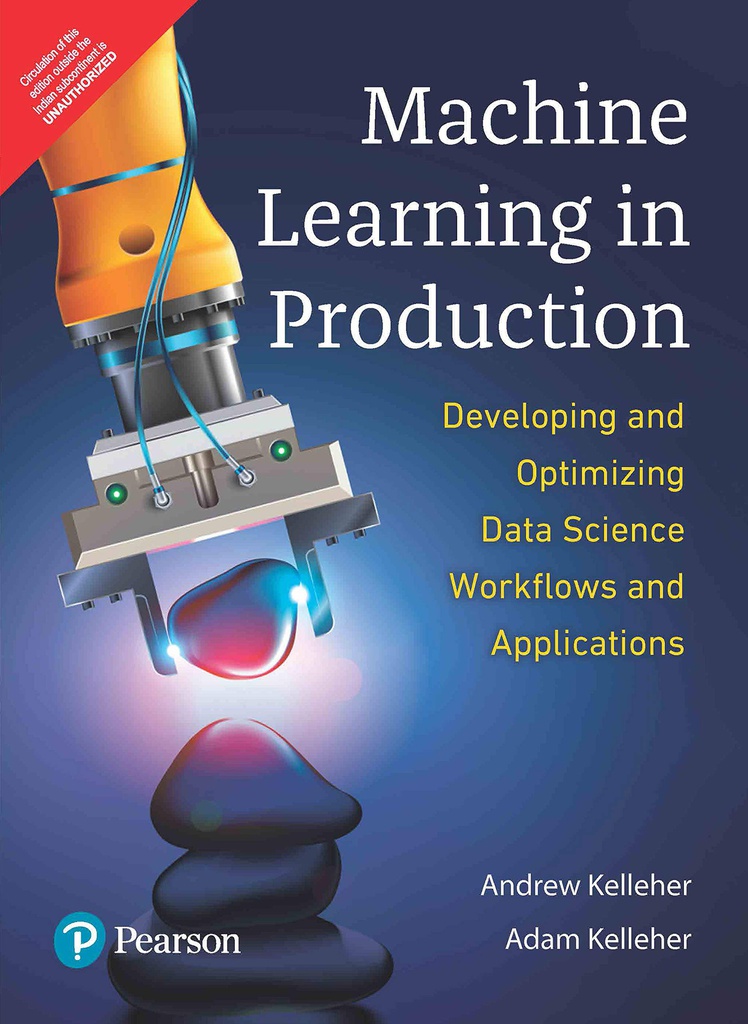Machine Learning in Production
Machine learning in production is a crash course in data science and machine learning for learners who need to solve real-world problems in production environments. Written for technically competent “accidental data scientists” with more curiosity and ambition than formal training, this complete and rigorous introduction stresses practice, not theory. Building on agile principles, Andrew and Adam kelleher show how to quickly deliver significant value in production, resisting overhyped tools and unnecessary complexity. Drawing on their extensive experience, they help you ask useful questions and then execute production projects from start to finish. The authors show just how much information you can glean with straightforward queries, aggregations, and visualisation, and they teach indispensable error analysis methods to avoid costly mistakes. They turn to workhorse machine learning techniques such as linear regression, classification, clustering, and Bayesian inference, helping you choose the right algorithm for each production problem. Their concluding section on hardware, infrastructure, and distributed systems offers unique and invaluable guidance on optimization in production environments. They always focus on what matters in production: solving the problems that offer the highest return on investment, using the simplest, lowest-risk approaches that work.
Features:
- Leverage agile principles to maximise development efficiency in production projects
- Learn from practical Python code examples and visualizations that bring essential algorithmic concepts to life
- Start with simple heuristics and improve them as your data pipeline matures
- Communicate your results with basic data visualisations techniques
- Master basic machine learning techniques, starting with linear regression and random forests
- Perform classification and clustering on both vector and graph data
- Learn the basics of graphical models and Bayesian inference
- Understand correlation and causation in machine learning models
- Explore overfitting, model capacity, and other advanced machine learning techniques
- Make informed architectural decisions about storage, data transfer, computation, and Communication
Table of Contents
- Chapter 1: The role of the data scientist
- Chapter 2: Project workflow
- Chapter 3: quantifying errors
- Chapter 4: Data Encoding and preprocessing
- Chapter 5: hypothesis Testing
- Chapter 6: Data visualisations part II: algorithms and architectures
- Chapter 7: Introduction to algorithms and architectures
- Chapter 8: comparisons
- Chapter 9: regression
- Chapter 10: classification and clustering
- Chapter 11: Bayesian networks
- Chapter 12: Dimensional reduction and latent variable models
- Chapter 13: causal Inference
- Chapter 14: Advanced machine learning Part III: bottlenecks and optimization
- Chapter 15: hardware fundamentals
- Chapter 16: software Fundamentals
- Chapter 17: software architecture
- Chapter 18: The cap theorem
- Chapter 19: Logical network topological nodes.
| Book | |
|---|---|
| Author | Kelleher |
| Pages | 256 |
| Year | 2020 |
| ISBN | 9789389588507 |
| Publisher | Pearson |
| Language | English |
| Uncategorized | |
| Subject | Computer Science / Machine Learning |
| Edition | 1/e |
| Weight | 1 kg |
| Dimensions | 24.4 x 20.3 x 3.7 cm |
| Binding | Paperback |


